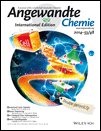Combinatorial Crystal Synthesis: Structural Landscape of Phloroglucinol:1,2-bis(4-pyridyl)ethylene and Phloroglucinol:Phenazine†
R.D. thanks the Indian Institute of Science for a senior research fellowship and G.R.D. thanks the DST for the award of a J. C. Bose fellowship.
Graphical Abstract
Crystal gazing: A study of the (pseudo)polymorphs of cocrystals formed from binary and ternary phloroglucinol–dipyridylethylene and –phenazine systems has shown that polymorphism in multicomponent crystals is less likely than in single-component crystals. The generation of several crystal forms during the crystallization of a multicomponent system can be viewed as combinatorial crystal synthesis with synthon selection from a solution library.
Abstract
A large number of crystal forms, polymorphs and pseudopolymorphs, have been isolated in the phloroglucinol-dipyridylethylene (PGL:DPE) and phloroglucinol-phenazine (PGL:PHE) systems. An understanding of the intermolecular interactions and synthon preferences in these binary systems enables one to design a ternary molecular solid that consists of PGL, PHE, and DPE, and also others where DPE is replaced by other heterocycles. Clean isolation of these ternary cocrystals demonstrates synthon amplification during crystallization. These results point to the lesser likelihood of polymorphism in multicomponent crystals compared to single-component crystals. The appearance of several crystal forms during crystallization of a multicomponent system can be viewed as combinatorial crystal synthesis with synthon selection from a solution library. The resulting polymorphs and pseudopolymorphs that are obtained constitute a crystal structure landscape.





